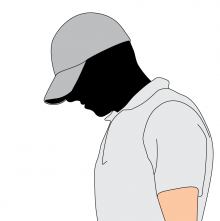The Golf Swing Faults
Swing Fault Elimination
The golf swing is a collection of connected motions that takes less than two seconds to complete. In spite of this short time-frame, any small slip can derail the swing motion. Each type of slip has been identified with a name and categorized as a swing fault. For every fault, it takes extra effort to maneuver through or correct the motion, which takes away your chance of fully manifesting your potential in that shot.
Swing with Authority
The most common reason for swing faults is not properly understanding the object of the action at each phase of the swing motion. You must have a clear purpose.
How to Eliminate The Swing Faults;
Three critical phases in the golf swing and their purposes:
Address:
The address is to determine and rehearse the correct position and angle to drive your club-head through the impact with maximum accuracy and speed. (See Through the Impact )
At the Top:
The top of the swing is the starting point of motion toward the target, and the goal is to begin that motion with club-head and hands properly aligned. ( See At the Top)
Impact Zone:
The goal at the impact zone is to send the ball to the target, not just to make forceful contact with the ball. (See Through the Impact Zone)
The SwingPilot is designed to help you to learn to connect those three vital stages in the golf swing using a learn-by-doing approach to a smooth, fluid, correct motion through backswing and downswing, rather than focusing on fixing one particular swing fault.
With our method, the SwingPilot eliminates the swing fault before it happens. (See How it Works)
Golf Mistakes Detection
As we've said, the single most common source of golf mistakes is the dominant hand. It can negatively affect any phase of the swing in several different ways.
If you haven't properly identified these problems, it is nearly impossible to correct them.

Here at SwingPilot, we've developed a successful method for resolving various problems in a golf swing. It starts by helping you locate the problems and assess its severity.
Testing your swing:
- Set SwingPilot at the neutral position.
- Place your dominant hand open at the neutral position.
- Perform a full swing at average speed.
- Check the angle of the post of SwingPilot to the club-head's leading edge. If you see a noticeable change, you're applying excessive force with your dominant hand.
The severity of the problem depends on the amount of the movement out of the proper swing trajectory caused by your dominant hand getting active and causing associated muscles to tense and stiffen.
Pinpointing the problem:
- Attempt a practice golf swing.
- Pause at various points in the swing and check the relationship between the post and the leading edge.
- Determine the position where you see the the strongest effect.
Taming the problem:
- Set the SwingPilot at the neutral position on your club.
- Place your dominant hand open and aligned at the neutral position.
- Hold the club at chest level, parallel to the ground, with your arms extended.
- Using only your shoulder muscles, swing to one side with hands rotated on the shaft in the direction of the swing.
- Swing to the other side in the same way. (Rotate hands to the direction of the swing)
- When you get the hang of it, you are ready to start training with the SwingPilot.
**The materials and sizes of grips differ depending on the manufacturer; this can make the SwingPilot fit on a grip slightly tighter or looser
**If the fit is looser, the SwingPilot may shift slightly during practice; however, it will not come off or break off from a club in given normal use.

